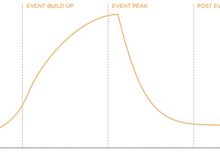Technological tools provide us with the data to assess the crowd count at different stages of the event. Over the past ten years we have been developing such a tool box to design a crowd counting solution that fits each specific scenario.
For example, some events are indoor while others are held in a large outdoor environment such as a street or park. The rate at which people move through the space also varies are people moving though the space over an extended amount of time or stationary. The crowd count therefore relies on fit for purpose inputs and the fusion of this data from various technologies and sources.
By sharing this tool box we look to support other crowd counting endeavours. The table below presents the range of crowd counting technologies used to date, recommendations on the situations where they are ideally applied and where to go for more information.
TABLE 1: CROWD COUNTING TOOLBOX
| Data Type | Purpose | Recommended use/Data source |
| Capacity Analysis | The event venue/site, whether permanent or temporary, should be designed so that people can assemble, enter, move around and exit the space safely.
Understanding the size of the space can also help with setting expectations of crowd numbers. To assist event planners to understand the capacity of the event space |
Calculating the potential capacity of an event space can be performed using online applications such as map checking https://www.mapchecking.com/ |
| Weather Conditions | To assist event planners to estimate attendance before the event (eg fine weather conditions are likely to result in greater crowds). | We recommend sourcing data from the Bureau of Meteorology throughout the event. Weather information is very useful in predicting crowd attendance. |
| Pedestrian Counts | To understand patterns of movement during a large event. | Some local government areas provide real time pedestrian counts. For example the City of Melbourne pedestrian counter system. |
| Beam Counters | To count the number of people passing through an entry. These counters are often available in venues and can be installed easily in doors or out.
|
Beam counters count people as they move past a beam of light. As the beam is broken a count is scored. These counters work well when one person walks through at a time, however in large events with multiple people walking through the beam simultaneously counts can be lost. Contact us for more information, we are happy to recommend beam counters. |
| Device Counters (ie Mobile phones) | Temporary devices installed to enable the counting of the number of mobile phones switched on. | Local systems can be established on site. Contact us for more information. |
| Survey | To establish the demographics and some behavioural insights into visitors. Surveys are often used to inform reporting into the social, economic and environmental impact of the event. | A number of consulting companies are able to assist with designing and implementing surveys of crowds. |
| Timelapse Photography | To provide a visual representation of the change in people coming into the site can also include night vision options. | Timelapse cameras come in all shapes and forms and can be used to capture the changing dynamics of the crowd. It is also possible to monitor these devices in real time as well as to use our customised crowd counting software. |
| Aerial Photography via Drone | To provide a visual representation of the change in people coming into the site. | The ability to capture aerial imagery of a crowd provides a distinct advantage for counting. We have experience in working with accredited drone operators for the purpose of extracting the number of people attending events. Satellite systems systems are being promised however getting the data at the right time at the right resolution is still an effort. |
| Thermal Sensors | Thermal Imaging detects emissions from moving objects. Since thermal technology is not sensitive to light, it can function in any physical space. The challenge is the ‘blending’ of a person’s heat signature with the surrounding environment. | This method is in progress as we are currently working on developing technology to combine thermally sensed count data with other data streams. |
| Mobile phone or Wifi detection | Counting of the number of mobile phones switched on. While these sensors allow tracking mobile phone companies are increasingly introducing errors to increase security, which can also reduce accuracy. | Detecting mobile or WiFi signals can be problematic. Please contact us for recommendations. |



